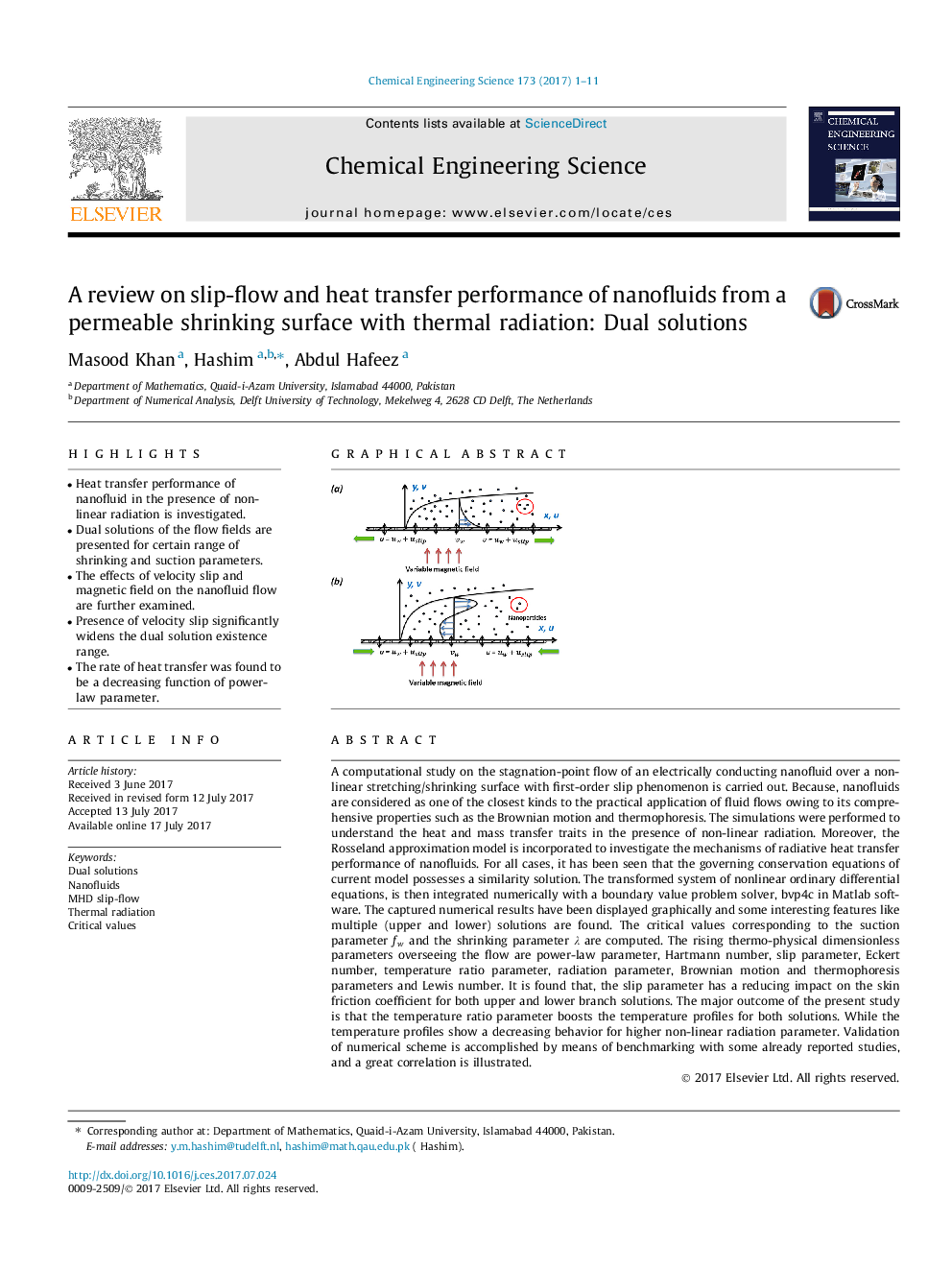| Article ID | Journal | Published Year | Pages | File Type |
|---|---|---|---|---|
| 6466838 | Chemical Engineering Science | 2017 | 11 Pages |
â¢Heat transfer performance of nanofluid in the presence of non-linear radiation is investigated.â¢Dual solutions of the flow fields are presented for certain range of shrinking and suction parameters.â¢The effects of velocity slip and magnetic field on the nanofluid flow are further examined.â¢Presence of velocity slip significantly widens the dual solution existence range.â¢The rate of heat transfer was found to be a decreasing function of power-law parameter.
A computational study on the stagnation-point flow of an electrically conducting nanofluid over a non-linear stretching/shrinking surface with first-order slip phenomenon is carried out. Because, nanofluids are considered as one of the closest kinds to the practical application of fluid flows owing to its comprehensive properties such as the Brownian motion and thermophoresis. The simulations were performed to understand the heat and mass transfer traits in the presence of non-linear radiation. Moreover, the Rosseland approximation model is incorporated to investigate the mechanisms of radiative heat transfer performance of nanofluids. For all cases, it has been seen that the governing conservation equations of current model possesses a similarity solution. The transformed system of nonlinear ordinary differential equations, is then integrated numerically with a boundary value problem solver, bvp4c in Matlab software. The captured numerical results have been displayed graphically and some interesting features like multiple (upper and lower) solutions are found. The critical values corresponding to the suction parameter fw and the shrinking parameter λ are computed. The rising thermo-physical dimensionless parameters overseeing the flow are power-law parameter, Hartmann number, slip parameter, Eckert number, temperature ratio parameter, radiation parameter, Brownian motion and thermophoresis parameters and Lewis number. It is found that, the slip parameter has a reducing impact on the skin friction coefficient for both upper and lower branch solutions. The major outcome of the present study is that the temperature ratio parameter boosts the temperature profiles for both solutions. While the temperature profiles show a decreasing behavior for higher non-linear radiation parameter. Validation of numerical scheme is accomplished by means of benchmarking with some already reported studies, and a great correlation is illustrated.
Graphical abstractDownload high-res image (110KB)Download full-size image
